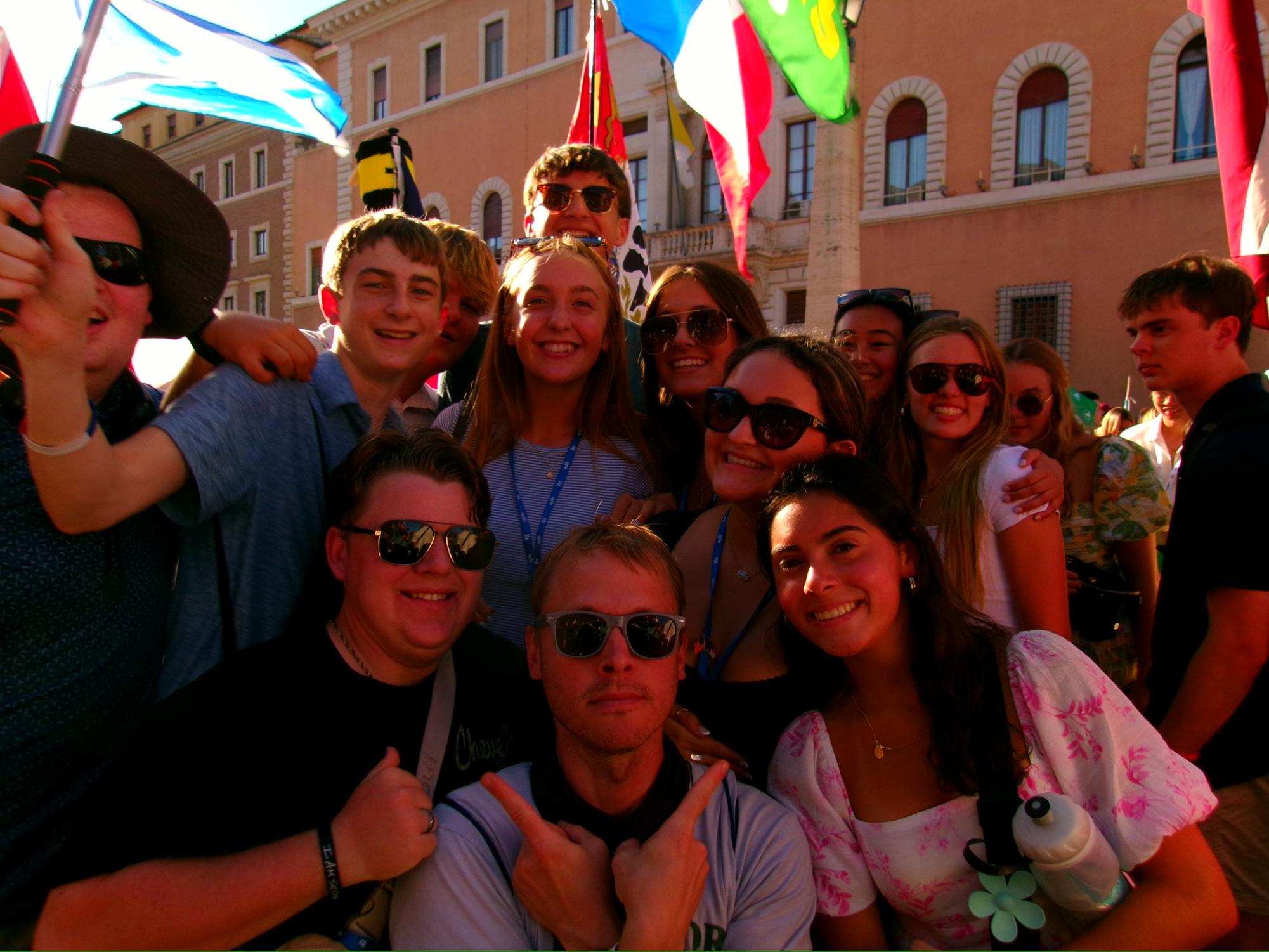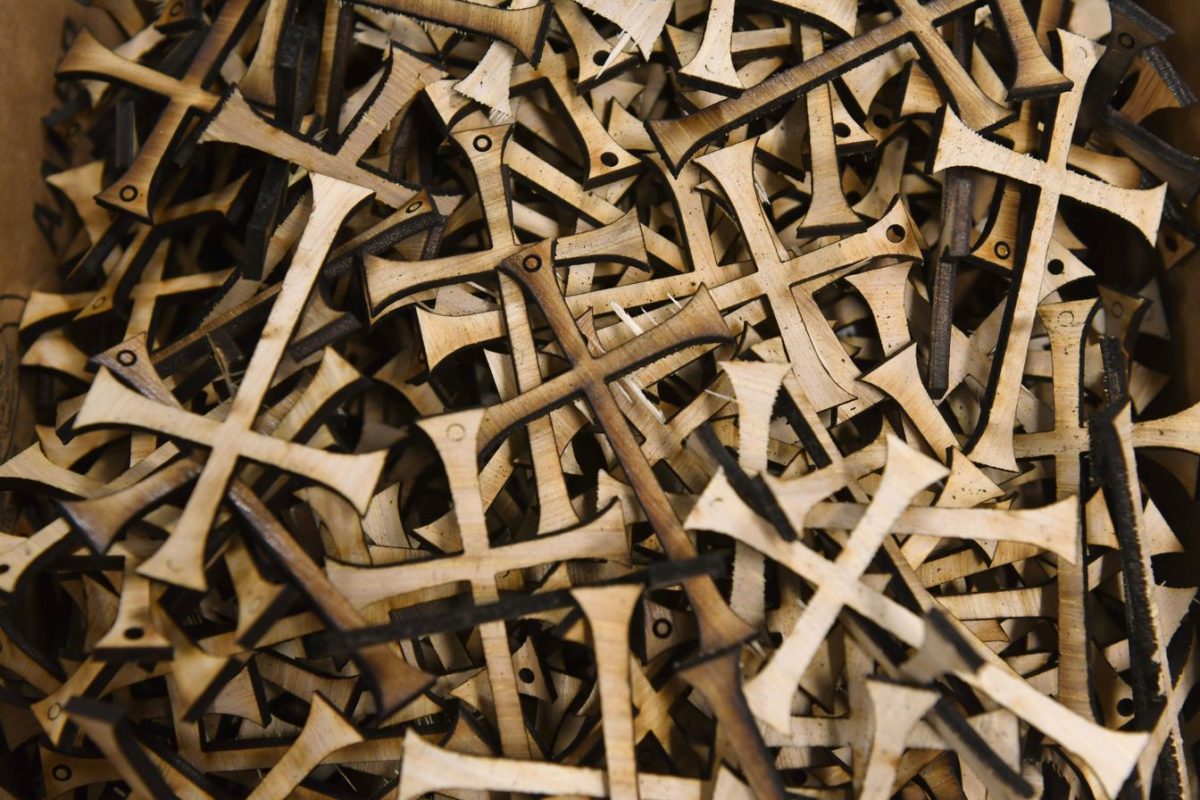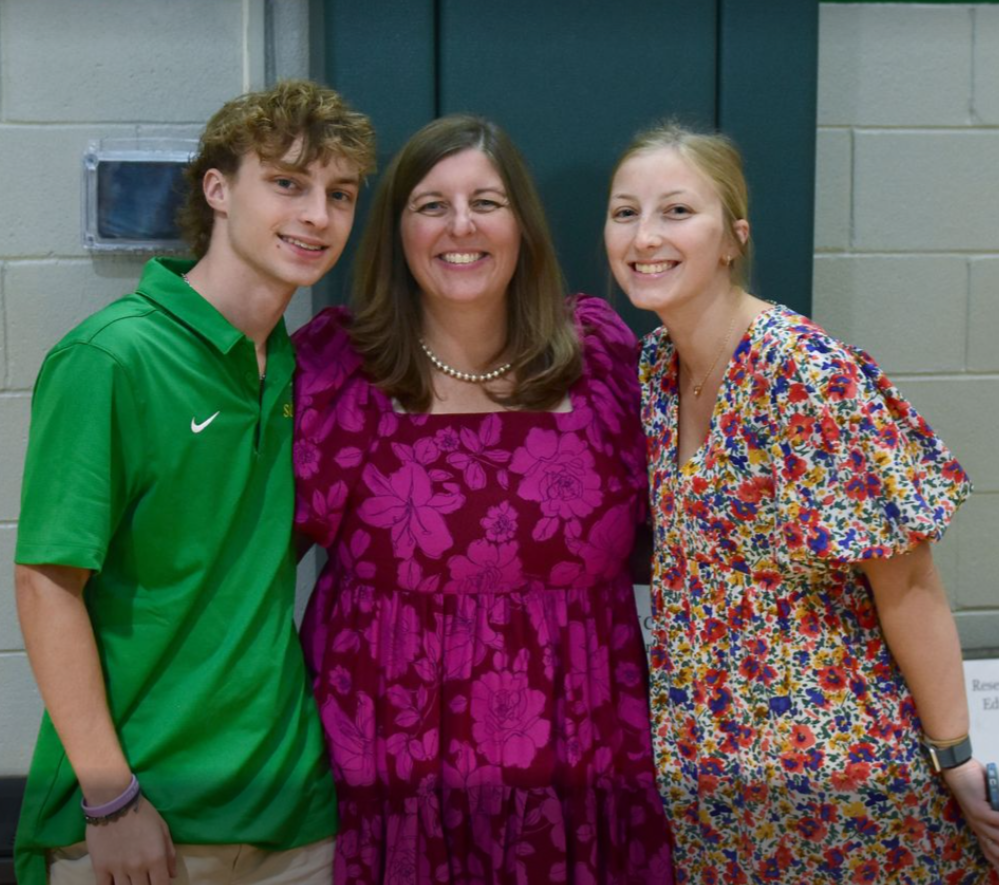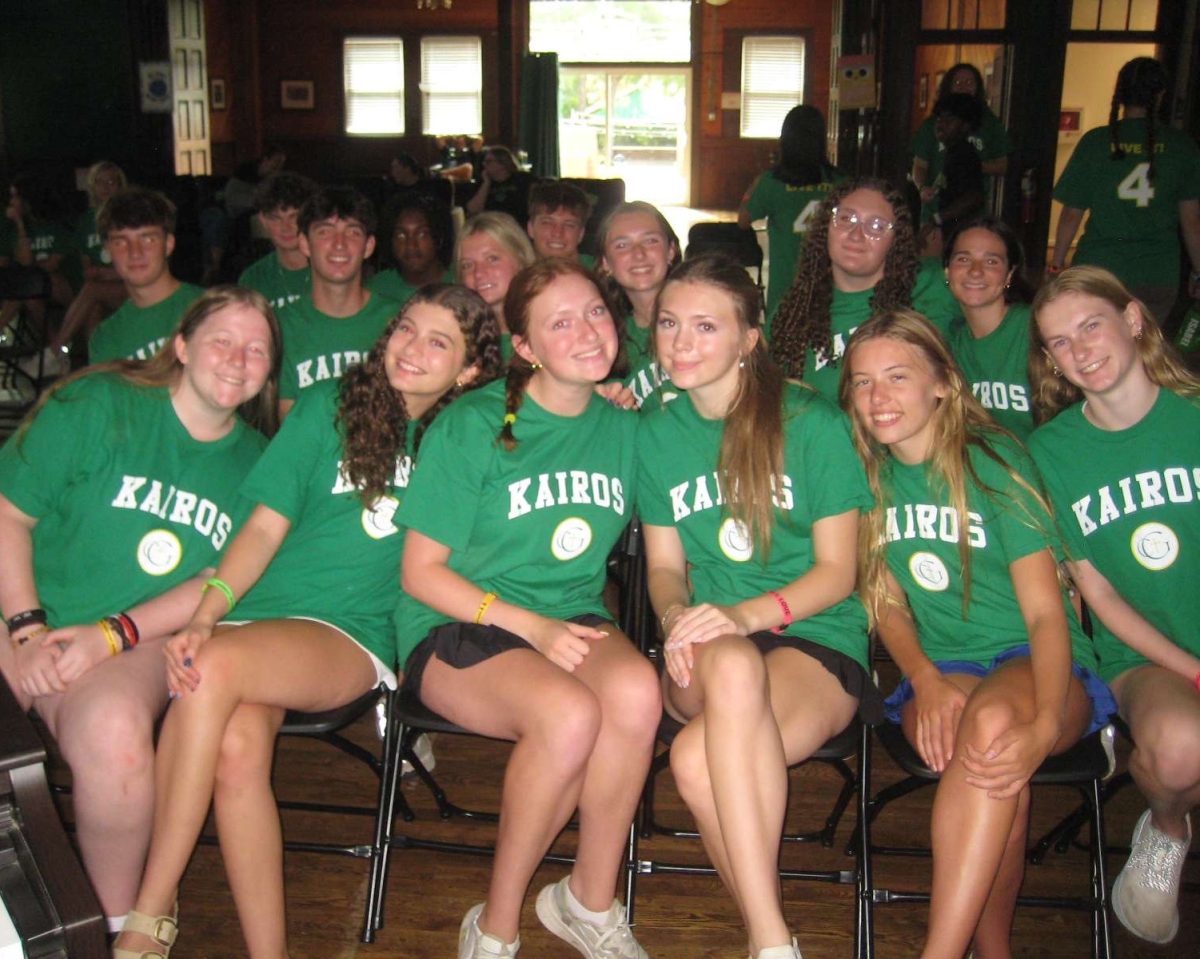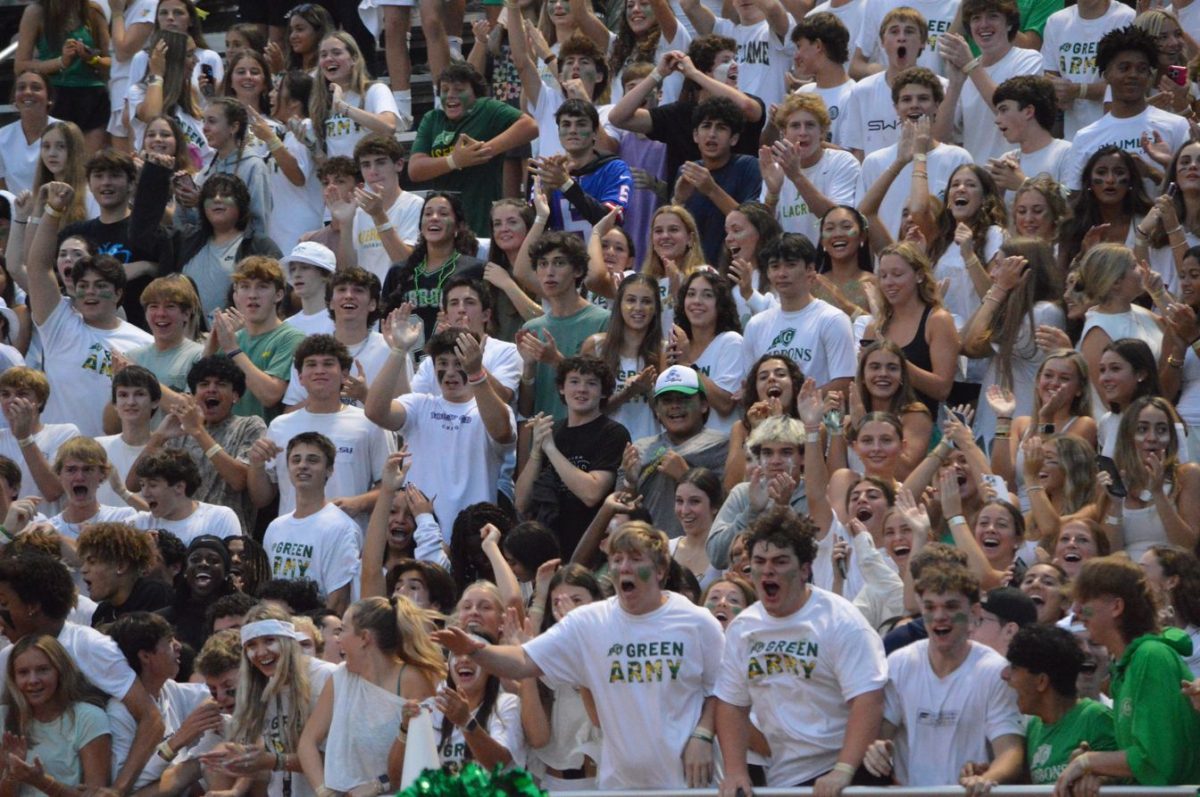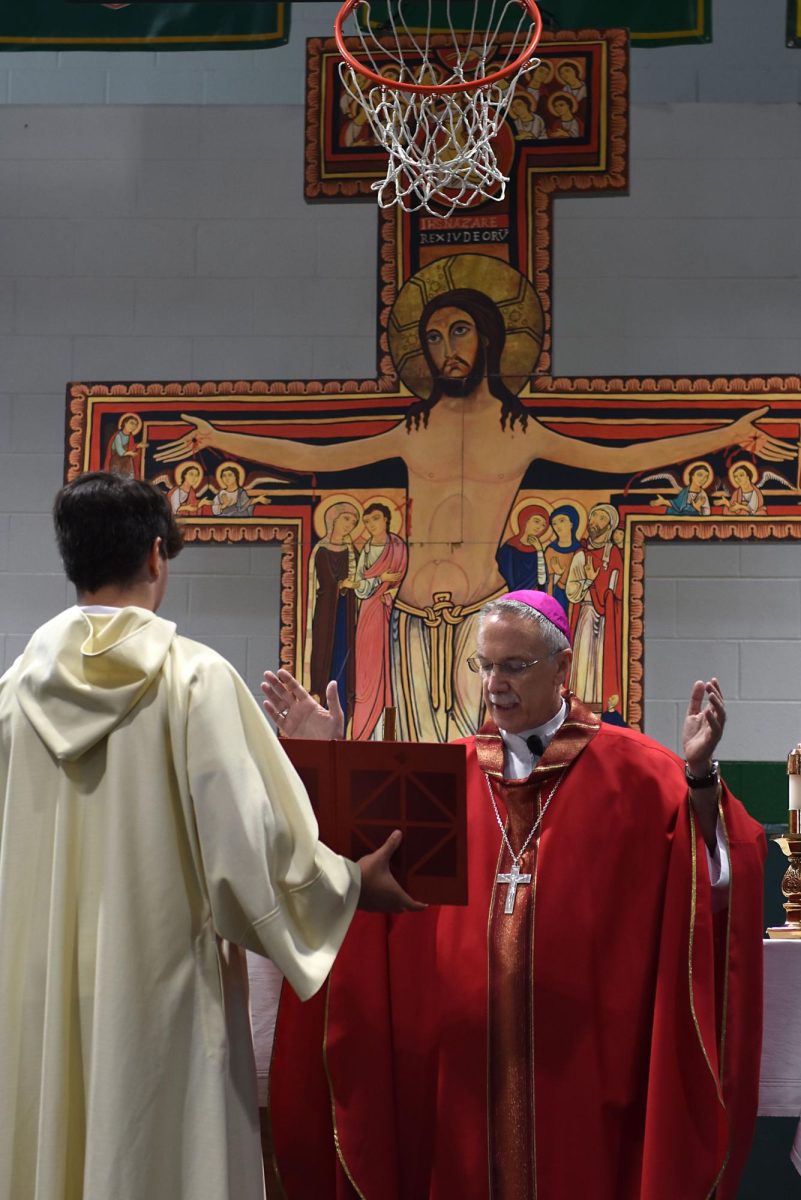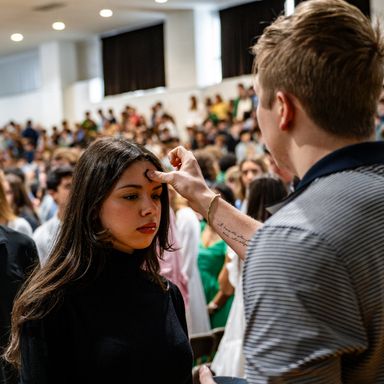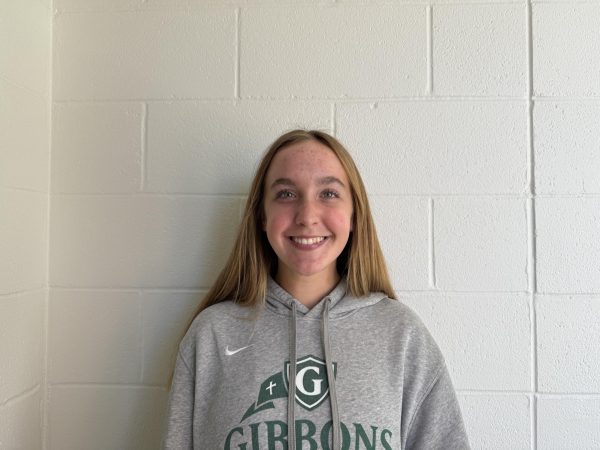The church is dying, they say.
Our youth spend their time, not in prayer, but on phones, addicted to social media. Sundays are no longer a day to go to church and spend time with family, but rather just another day of the weekend devoted to lounging and scrolling.
If you are one of the few who do spend their free time in prayer and in worship, you are an outlier. One of the few.
The 2025 Pilgrims of Hope Catholic Jubilee final Mass in Rome was estimated to have a total of 500,000 young Catholics present.
The estimate was wrong.
One million Catholics instead were gathered in a sprawling, grassy field that stretched for miles on end. The ground was littered with sleeping bags, luggage, and occasionally a person or two that was still huddled inside their sleeping bags, groggily waking up to the bright Italian sun as influxes of pilgrims tried to get closer to the altar where Pope Leo XIV would be giving the closing mass.
What drew double the expected amount of the world’s youth into the heart of Catholic culture and tradition?
If the church were dying, like we hear all the time, wouldn’t our youth find better ways to spend their time than visiting sacred sites, walking through churches, and praying?
One Thing I Witnessed
“Come to Me, all who labor and are heavy laden, and I will give you rest.” Matthew 11:28
Churches–if you can even call the castle-like structures that–are hot. Often, when ducking into a cathedral or basilica in Rome, you expect relief from the heavy 90-degree heat that sits over the city. However, the lack of air conditioning quickly squashes that expectation as the churches are often just as hot and stuffy as the outside air.
It had been a long day. Step trackers were approaching 25,000 as the Gibbons group made their way into “The Papal Basilica of Saint Paul Outside the Walls.”
We took our seats, and soon the soft, mechanical whirring of mini fans sounded as students soaked in the brief respite of the sun, taking advantage of the combination of cool air on skin and resting legs.
This was the National U.S. Pilgrims Gathering. The group was excited. Catholic ‘celebrities’ such as Sister Mary Grace and Bishop Barron were giving talks, and there was also going to be a procession of 12 relics of saints and blesseds significant to the American Church– all happening before Eucharistic Adoration.
The group was also tired. It had been another morning of getting up before the sun and constant walking and exposure to heat. While no one would complain, there was definitely an overall fatigue in the air.
About two speakers in, Junior Zane Minardi drifts off to sleep in his chair.
Fr. Luke, noticing his head drooping, nudges him gently, not wanting him to miss wisdom from the talks being given.
Zane slowly opens his eyes, making a second attempt to pay attention to the speaker at the front of the basilica.
Slowly but surely, his head droops again, eliciting another “Hey buddy” accompanied by a loving pat from Fr. Luke.
Zane shook off his tiredness and soon eased into a kneel as Adoration began and Jesus became truly present in the room.
I would be lying if I didn’t say I felt sorry for Zane– he was clearly feeling the effects of the arduous day we had prior, and now he had to sit through Adoration, clearly on the verge of drifting off to sleep.
Adoration continued. Gibbons’ students were moved to reverence as the powerful spirituality of being in a room with thousands of fellow American pilgrims, multiple saint relics, and the very Body of Jesus sank in.
About a half hour passed, when Mr. Blanton and Fr. Luke looked up from prayer, and lightly whispered, “Ready to go?” They slowly started to get up.
Zane looked up, still kneeling, and lightly nudged Fr. Luke. “Five more minutes?”
This account is simple and yet the most accurate and reflective story I can tell about the Jubilee of Hope. We crawl, walk, run to Jesus, weary and tired, and He simply holds us. Zane did not take a nap, but he still found rest and wanted to remain there.
What is the Jubilee?
“And you shall consecrate the fiftieth year, and proclaim liberty throughout the land to all its inhabitants. It shall be a jubilee for you, when each of you shall return to his property and each of you shall return to his clan.” Leviticus 25:10
The Catholic Jubilee or Holy Year is an extraordinary year of forgiveness, grace, and reconciliation rooted in the Old Testament book of Leviticus and Isaiah, where God promised the people of Israel a year of restoration. During this time, debts were paid, slaves were liberated, and land was returned to its original owners.
These seemingly outdated promises from the Lord remain strong 2,025 years after Jesus’ incarnation. I can, with conviction, say that what God promised His people all those years ago, He fulfilled in us again this year. Through the abundance of mercy and hope, we pilgrims were witnesses to the liberation from sin through Confession at the Circus Maxima with 28,000 other young people. Being witness, throughout the pilgrimage, to Jesus’ suffering, such as seen in the tour of the Shroud of Torin, we understood the debts Jesus paid for us. Walking through the streets of Rome, which in Jesus’ time was a place of polytheism and spiritual decay, and seeing them filled with thousands of Catholics from all over the world, from all walks of life, we saw that land was returned to its rightful owners.
The Catholic Jubilee is a continuation of this tradition in the Old Testament, brought to completion through Jesus Christ.
A “year of grace,” the Jubilee offers plenary indulgences, a complete remission of the temporal punishment for sins already forgiven through confession.
A significant symbol of entry into this time of grace is the opening of the Holy Doors. These doors, located in four major papal basilicas in Rome, are opened only every 15-50 years during Jubilees.
Gibbons students walked through these doors on their knees, prayer intentions heavy in their minds and hearts. Entering through these doors, we as pilgrims committed to the healing and reconciliation that Jesus promises us in this year especially.
The Pope proclaims Jubilees, usually every 25 years, and designates them with a specific theme, this year’s being “Pilgrims of Hope.” During a time of war, conflict, and internal spiritual struggles for many, this theme couldn’t have been more vital.
Pilgrims of Hope
A boy, at the young age of 15, died tragically of cancer. He was diagnosed four days before his death.
A man was nailed to a cross and hung upside-down, killed. He was the leader of a large movement.
What could come of these instances but sorrow, despair, and a sense of hopelessness?
Truly, nothing but those.
If it weren’t for Jesus.
How could Peter willingly go to the cross, knowing the responsibilities on his shoulders, knowing he was meant to build up Jesus’s everlasting church? He didn’t know that his very successor would be holding Mass in a square named after him, in the very city that persecuted him 2,000 years later. Yet he trusted. He trusted, and as Bishop Baron spoke to us at the U.S. National Pilgrim Conference, “Where is Nero?” Nero, the emperor of Rome, who sentenced Peter to death, hoping to end the influence of Christianity, would now see former places for pagan worship, like the Pantheon, be turned into churches, and the Circus Maximus being used as a place for the sacrament of Reconciliation.
Nero’s ancestors are no more. However, Peter’s successor is currently leading the Church that he tried to squash.
Peter didn’t know any of this, and that’s important. Peter gave his life trusting only in the knowledge that Jesus gave his life for us, and that was enough.
There’s something bigger, something more important that is to be understood from affliction and from tragedy. And it is the undeniable, incredibly powerful glory of God that can come from anything if we have one thing: hope.
Hope truly makes one invincible, and yet it is also the hardest thing to practice. It is putting into action the verse “If God is for us, who can be against us?” Romans 8:31. Evil seeks to sow doubt and discord into our lives, especially in times of desperation and confusion. And it’s so easy to lean into that when things aren’t going right. Thankfully, though, we had the living examples of these saints that we got to connect with on a deeper level in Rome, who are the most concrete examples of hope that we could ask for.
As a not overly emotional person, at adoration on our fifth day, this overwhelming knowledge hit me hard as I looked at a painting of St. Carlo Acutis at the front of the basilica and then looked to the altar where Jesus was in the Blessed Host. Tears falling down my face, I was overwhelmed by His Glory. Without Jesus, this boy’s death would simply be just a death. But because of Carlo’s hope in his savior and his surrenderment, he has touched thousands of lives, bringing innumerable youth and the elderly alike closer to Jesus. Through intercession, he has also brought physical healing to the afflicted; confirmed miracles.
That boy who died a tragic death at only 15 years old was named a saint in St. Peter’s Square, with his mother present at his canonization.
What is more powerful than being a pilgrim of hope? It is looking anything in the eye, knowing the battle is already won because Jesus Christ has won through his death on the cross. His Glory will shine through anything.
Each of us pilgrims had moments we could think of; hardships and losses. Times we fell short and times out of our control where we experienced pain. Throughout our pilgrimage, understanding the Catholic response of hope to these instances was reinforced as we saw firsthand His Glory portrayed in the city of Rome and Assisi throughout this one-of-a-kind journey.
Why Did We Go?
“My sheep hear my voice, and I know them, and they follow me.” John 10:27
“Father Luke encouraged me,” said Charlotte Bouchard.
“I wanted to see the pope,” said Avery Hale.
“I thought there’s no better way to grow my faith than being in the center of the church,” said Nathan Johnston.
“Because my friends were going…and to see the pope,” said Greyson Murphy.
“To experience the universality of the church,” said Natalia Villarreal.
“I’ve always wanted to go to Italy,” said William King.
Students decided to embark on this pilgrimage for a variety of reasons. Whether they were the ‘right’ ones or not, I think each and every one of us realized that what we hoped to occur on the trip, what we expected to get out of it, was something we couldn’t even imagine beforehand. God happily took our small yes that we gave him when we signed up for the 2025 Jubilee and formed us into pilgrims for His heavenly kingdom. His grace met us where we were at and slowly but surely planted seeds in us that had no choice but to grow.
There was something, big or small, that led 40 Gibbons students and educators into the airport, the afternoon of July 25, 2025; suitcases filled to the brim, hearts full of excitement and expectation. It’s incredible to think of the plan God had for us right then, how ready He must’ve been to become closer to His children and to see our faith grow.
The Jubilee was not a gathering of the world’s most faithful, intensely spiritual people. Rather, simply a group of people who acknowledged a lack in their lives. Whether they came to Italy hoping the lack could be filled through gelato or shopping in Rome, they left, whether they wanted to or not, knowing that the lack could only be filled with Jesus.
Our Experiences
“You make known to me the path of life; in your presence there is fullness of joy; at your right hand are pleasures forevermore” Psalm 16:11
In the seventh month of the Jubilee Year, Cardinal Gibbons students and educators embarked on a much-awaited journey to Assisi, Orvieto, and the Holy City of Rome.
Our group touched down in Assisi, after a nine-hour flight, with enough energy to celebrate a group Mass in a conference room, followed by a late, but delicious dinner. After briefly enjoying the idyllic view from our hotel patio, heads hit pillows immediately.
Sleep was necessary considering the nature of our days to come.
Assisi
Waking up in Assisi, our pilgrimage began.
The town was dreamlike. The influence of the saints and the holiness that the city possessed was simply radiant.
This town ingrained in us the beauty of the saints; how blessed we are to have them.
“They are my friends to help me in my faith,” said Villareal.
Assisi was fairly quiet (compared to Rome), and it was the perfect opportunity for prayer and bonding that began our growing relationships with Jesus and each other during this pilgrimage.
Highlights:
- Porziuncola in Basilica of St. Mary of the Angels
- Tour of Convent of San Damiano
- Praying at the Tomb of St. Francis of Assisi
- All-You-Can-Eat-Pizza Lunch (while it poured outside)
- Soaked but singing in the rain while waiting to pray at the tomb of St. Carlo Acutis
- Mass at Santa Chiara, Tomb of St Clare of Assisi, and praying at San Damiano Cross
- GELATO!
- Dinner and Reflection by Ms. O’Neill
Orvieto
In the middle of an unassuming, quiet, idyllic Italian town settled between Rome and Florence, lies a 1,066-foot cathedral, an architectural marvel that would stop any tourist in their tracks.
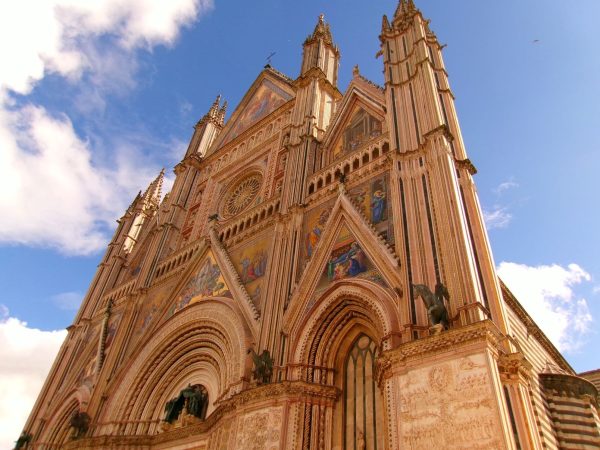
This is the Cathedral of Orvieto and the home of the Eucharistic Miracle of Bolsena.
In 1263, a priest with doubts about the true identity of Jesus in the Eucharist was giving Mass, not fully believing, when he witnessed in real time the consecrated Host bleeding onto the altar.
The very Host with blood still on it, as well as the linen cloth under the chalice that it bled on, is kept in this cathedral that we had the privilege to not only see from the outside, but to go inside of and pray in.
For me, and hopefully for many others on this trip, our experience in Orvieto was one of the big ways Jesus was changing my heart in relation to the Eucharist. It is more than bread, I started to realize. It is His very Body. I knew that, I had always been told that growing up, but this pilgrimage, God was calling me to try to understand and experience this miracle more fully.
Rome
Truly hard to put into words was our experience in the city of Rome, the Holy City, the Eternal City.
A list of highlights or events that the Gibbons group participated in gives a summary, definitely, of the experience, but leaves so much unsaid about the unique, personal experiences that changed each of our hearts in different ways during this part of the pilgrimage.
“What was it like to see the Pope?” was a question I got upon returning more than once. Seeing the Pope was amazing, obviously, but amazingly, the moments that we pilgrims may have thought were going to be the most powerful often weren’t.
Senior Bryce Fitzsimmons, for example, said, “My favorite part of the pilgrimage was Adoration in the small chapel. It was a quiet activity, but that moment with Jesus was something I really looked forward to.”
Rome was hectic, loud, and often overwhelming. However, the abundance of Catholics on the street from different countries, all here for the same reason, in striving for holiness, left a palpable joy among all of us, keeping us grounded and at peace.
Being in the city that has so many places that bear witness to our faith, a place where saints lived, where saints were martyred, even the first Pope St. Peter, was life changing for a group of mostly cradle Catholics. Rome showed us the truth of the Catholic faith, the universality that we don’t always see back home, and it was truly beautiful and affirming.
Highlights:
- Opening Mass at St. Peter’s Basilica
- Front and Center for Papal Audience with Pope Leo XVI
- USA Pilgrims Gathering at Basilica of St. Paul Outside the Walls
- Climbing Holy Stairs
- Prayer at Tomb of St. Piergiorgio Frassati
- Reconciliation Tents at Circus Maximus
- Holy Doors of Basilica of St. Mary Major & Tomb of St. Francis
- Visiting Legionaries of Christ (where Fr. Luke studied) and Tour of SHroud of Torin
- Tour of Vatican Museums and St. Peter’s Basilica
- Mass with Pope Leo XIV and One Million Young People
Brothers and Sisters in Christ
“So we, though many, are one body in Christ, and individual members of one another” Romans 12:5
Mrs. Jackson shared a short story that summed up her first day on our pilgrimage and I think very clearly exemplifies the relationship of the Gibbons’ community as a whole in Italy.
Returning to her hotel room, after the first long day that began our pilgrimage, Mrs. Jackson naturally called her husband. Unnaturally, however, she couldn’t explain why when he asked her how the first day was, she was immediately moved to tears.
After most likely a little confusion and worry from the other line, Mrs. Jackson said, “It’s so rare to be around this much joy anymore.”
However simple it may be, this statement fully encapsulates the community and the love that was present and palpable among all of us during this Jubilee pilgrimage.
And how could it not be? Villarreal explained, “Jesus is the best foundation for any friendship…being united for the same reason and the same purpose of growing in our faith; the group that went on the Jubilee was literally a family.”
How often do we forget the joy that God promises us when we give our lives to Him?
Our faith didn’t only grow in churches or seeing saints’ relics, however amazing and powerful that was.
It grew in laughter and genuine conversation. It grew in waving to other countries’ flags we spotted down the streets of Rome and Assisi, and dancing with them as well.
Faith increased when we saw one of our own students need medical assistance and the love and care that the teachers showed for him, dropping everything and helping him, missing Pope Leo’s debut on the Pope Mobile. One of our own pilgrims jumped over the barricade in the square to make sure he got help from a medic.
Our faith was strengthened when we ate gelato together, when someone lent their fan to someone in need of it, even though they really wanted it. Faith and joy were most present in a shoulder to lean on in the bus rides, or a hug at the end of a long day.
Especially in the late hours when our chaperones stayed back in the lobby, just in case anyone needed someone to talk to or pray with before going to bed.
Over the ten days, I experienced so many highs and yes, a lot of lows as well. However, those lows didn’t define my trip; they strengthened it because I was simply able to turn to my neighbor or to a chaperone and say, “Will you pray with me?” Being surrounded by this type of community, a community devoted to Jesus, restores peace and hope in our world and keeps the church beating and alive, and I am so blessed to have witnessed it on the 2025 Catholic Jubilee Year Pilgrimage.
On the Contrary
Our youth is a youth that spends their time in prayer. We rely on the saints, the rosary, and the incomprehensible graces given to us in the Eucharist to lead our hearts. We find joy in our lives because when we look into our neighbor’s eyes, we simply see a person Jesus suffered for.
We are one of many, a part of a universal faith that has lived before us and will live after us.
The church is alive.
The church is alive and vibrant and on fire.
And we are the church, and we are pilgrims of hope.


